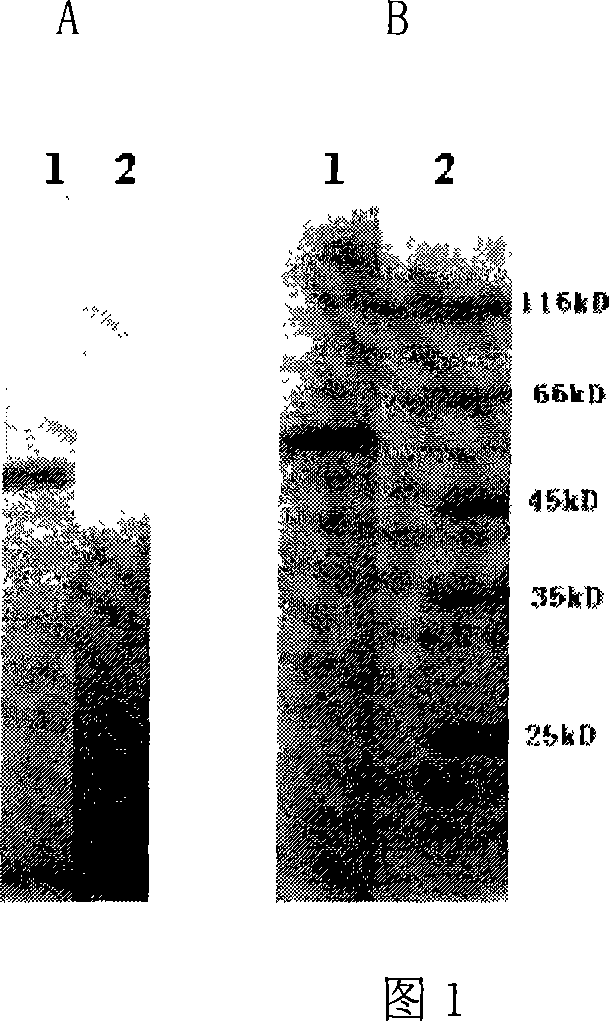Isolation and purification method for high-yield of low-temperature catalase by antarctic marine bacillus n2a
A marine bacillus and catalase technology, applied in the field of marine microbial enzymes, can solve the problems of insufficiency, long steps, poor effect, etc., and achieve the effect of simple process, simple purification, fast effect and good effect
- Summary
- Abstract
- Description
- Claims
- Application Information
AI Technical Summary
Problems solved by technology
Method used
Image
Examples
Embodiment 1
[0028] Strains and Culture Conditions
[0029] Strain n2a was isolated from Antarctic seawater and identified as a new species of Bacillus by 16SrRNA gene sequencing (GenBank accession number DQ508485). Growth and fermentation medium: Each 1L distilled water contains 8g peptone, 5gNaCl and 3g yeast extract, pH7.2. 11 shake flasks contain 200mL medium, 20°C, 200rpm shaker for 24h to late exponential growth phase. The cells were collected by centrifugation at 5000g at 4°C.
[0030] purification process
[0031]23g of bacteria were resuspended in 365ml pH7.5 50mmol / LTris.Cl (buffer A), and ultrasonically disrupted 10 times with 75W power (Vibra cell VCF1500, Sonics), each time for 1min with an interval of 2min. Centrifuge at 4°C to get the supernatant, add ammonium sulfate powder to 40% saturation, centrifuge to collect the supernatant, add ammonium sulfate to 70% saturation, and centrifuge at 4°C to collect the precipitate. Dialyze the precipitate against buffer A overnight, ...
PUM
 Login to View More
Login to View More Abstract
Description
Claims
Application Information
 Login to View More
Login to View More - R&D
- Intellectual Property
- Life Sciences
- Materials
- Tech Scout
- Unparalleled Data Quality
- Higher Quality Content
- 60% Fewer Hallucinations
Browse by: Latest US Patents, China's latest patents, Technical Efficacy Thesaurus, Application Domain, Technology Topic, Popular Technical Reports.
© 2025 PatSnap. All rights reserved.Legal|Privacy policy|Modern Slavery Act Transparency Statement|Sitemap|About US| Contact US: help@patsnap.com

